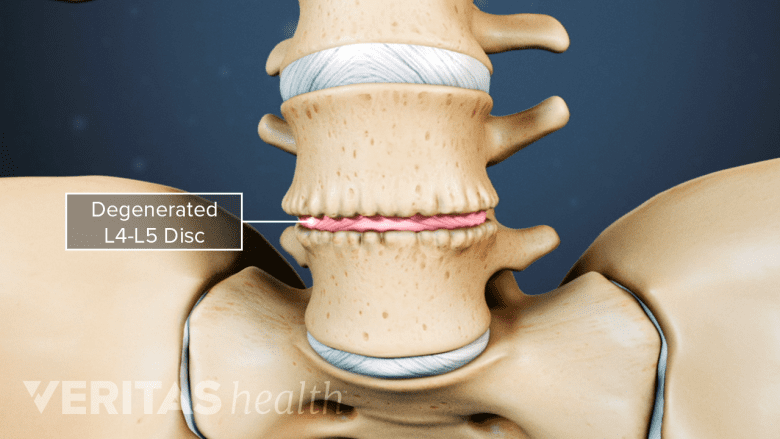The vast majority of people with lower back pain and/or sciatica symptoms from lumbar degenerative disc disease will be able to successfully manage their pain and avoid surgery. Indeed, over 90% of individuals specifically diagnosed with degenerative disc disease will find that their low back pain and other symptoms go away or subside within three months.
But even patients whose pain does not subside within three months can undertake a range of actions—including a number of self-care activities—to manage their pain.
This article identifies the key components of a self-care program patients can undertake to manage the pain of degenerative disc disease, and describes actions that can be incorporated into daily routines, including:
- First, quickly reduce the pain to a tolerable level
- Engage in a controlled, progressive exercise and active rehabilitation
- Identify and act on any behavioral and activity modifications needed to minimize aggravation to the disc
- Improve hydration and nutrition to foster improved spinal disc health
In This Article:
- Living with Degenerative Disc Disease
- How to Lessen Pain from a Degenerated Disc
- Controlling Degenerative Disc Disease Pain: Three Things You Can Do
- Step Two of DDD Management: Reduce Lower Back Stress
- Step Three of DDD Management: Improve Nutrition
- Cervical Degenerative Disc Disease Video
- Lumbar Degenerative Disc Disease Video
What you need to know about DDD Pain
Degenerative disc disease occurs due to age-related wear and tear of a disc.
What many patients don’t know is that degenerative disc disease pain in the vast majority of cases is often manageable through self care and some nonsurgical treatments.
Here are several insights about degenerative disc disease that will help patients navigate their treatment options and play an active role in minimizing their pain
- Degenerative disc disease pain does not tend to progress with age. While the discs will often continue to degenerate, the associated pain tends to subside. Generally by age 60 a degenerated disc will have stabilized and will usually not be painful.
- The typical symptom profile is that pain increases at times with a painful flare-up that can last several days, weeks, or even a few months, but then usually subsides back to a lower, more tolerable level.
- The surgery to address degenerative disc disease is typically a spinal fusion, which is a major surgery and changes the anatomy of the back by fusing a motion segment together into one long bone.
Consequently, the goal for patients living with degenerative disc disease should be to do what they can to proactively manage their painful flare-ups and reduce the incidence and severity of flare-ups. This focus will, in turn, provide the best chance for patients to maintain their ability to function in everyday activities, if possible avoid major surgery.
Editor’s Top Picks
- Lumbar Degenerative Disc Disease Treatment Animation
- Degenerative Disc Disease Treatment for Low Back Pain
- Cervical Degenerative Disc Disease Treatment Animation
- Lumbar Degenerative Disc Disease Treatment
- Cervical Degenerative Disc Disease Treatment Options
- Pain Medications for Degenerative Disc Disease Treatment






